We were all supposed to learn some lessons from Guardians of the Galaxy’s box office. It was a validation of the Marvel Studios brand, and a signal of the willingness of audiences to embrace comic book-based entertainment which, in the end, doesn’t actually feature any superheroes. It was a testament to the power of the female moviegoer, who accounted for 44% of Guardians’ opening weekend, the best in Marvel Studios history, even more than the Avengers. It was a sign of audiences desperate for something familiar (kind of Star Wars/Firefly-y) but new (but not too Star Wars/Firefly-y). It was a triumph of brilliant marketing married to a genuinely awesome film which everyone loved. In other word, they made a great movie, and the people came (Whoa, I was going for a Field of Dreams thing there, but that sounded kind of dirty, although considering the praise the internet has showered down on Guardians…).
So, what are we to make of the fact that Guardians dropped the now-standard 56% in its second weekend, identical to the similarly beloved Captain America: The Winter Soldier but barely better than the far more divisive Iron Man 3 (-58%) and Thor: The Dark World (-57%)? Or that Guardians is now the 9th film of the summer to debut at #1 in the domestic box office top 10 only to fall down to at least #2 the next weekend? Or that it was beaten by Michael freakin’ Bay, who produced Teenage Mutant Ninja Turtles into a surprise hit and insta-film franchise?

Fist shaking in the air: “Darn you, Michael Bay!”
Well, for starters, it’s a lot easier to ponder the box office realities for a film you like than it is for something you don’t, Guardians being a “Yay us!” proposition and TMNT more of a “Well, I hope you’re happy, all you weird people who went to see that movie!” For another, Hollywood is a global business, more reliant on foreign markets than ever before, but for domestic PR purposes Hollywood is a one-week business: all that matters is how you can spin the stats you get from that opening weekend (more for a movie on the scale of Guardians than something smaller). We, as an audience, are trained to accept that, gladly embracing (for example) story after story that points to Lucy’s $40+ million opening weekend as potential proof of concept for female-led action movies, blissfully ignoring how fast Lucy’s actually been falling at the box office since those first 3 days because isn’t that just what all films do now?
Some of this is a reflection of how many of these film studios are publicly traded entities, subjects to the notoriously fickle whims of the stock market. As discussed elsewhere on the site, DreamWorks Animation suffered a huge hit to its stock price the Monday after How to Train Your Dragon 2 opened 15% higher than its predecessor but still below analysts’ seriously, seriously inflated expectations. Of course, as of this writing Dragon 2 now sits at $487 million worldwide off of a $145 production budget, just $11 million short of the first Dragon’s worldwide total. That would seem to be inherently good, but it doesn’t much matter because minds were made up about that movie after just its first 3 days.
More of this, though, is simply the continuation of long-held marketing practices. As argued in Marketing to Moviegoers, “Box office is increasingly front-loaded, with around half of a big major-studio film’s gross now coming from the opening week, versus just 20% in 1990.”
How It Used To Be

Generally, movies used to come out in fewer theaters and build up audience through word-of-mouth. Of course, many movies still do that exact same thing, Richard Linklater’s Boyhood being the most current example, but instead of being a practice reserved for smaller films this is something which used to apply to all movies. For example, Guardians of the Galaxy just set an August record by opening in over 4,000 theaters. The film it is most often compared to, Star Wars, never rose above 1,750 theaters during its entire theatrical run from 1978-1980, yet it was #1 in the box office top 10 for all but 2 of its weeks in theaters. To be fair, part of that is simply a reflection of how many more theaters there are now than there used to be, but it’s also a reflection of a change in strategy.
If you limit it to summer releases, you see that a classics like 1982’s E.T. was #1 at the box office for 16 of its first 26 weeks in theaters, Return of the Jedi was #1 for 6 out of 7 weeks between June and July 1983, Ghostbusters owned the June/July 1984 box office, finishing #1 for 8 of 9 weeks, Back to the Future did 10 of 11 weeks at #1 in 1985, Karate Kid 2 ruled all of July and Aliens all of August 1986, etc.
When Did it Change?
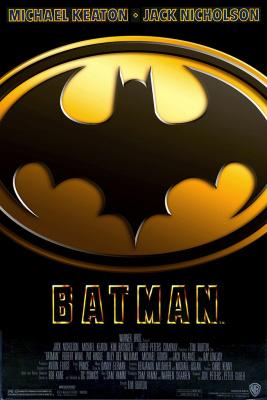
Things started getting a bit more fragmented and competitive during the summers of 1987 (big hits=Beverly Hills Cop 2, Robocop, Stakeout) and 1988 (big hits=Crocodile Dundee 2, Cocktail, Coming to America), but the true precursor to our current way of movie marketing came with Tim Burton’s Batman in 1989. It opened in over 2,000 theaters and took in $40 million (like $83 million at current ticket prices), which Warner Bros. touted as being the biggest opening weekend in history. However, it proceeded to drop 26% and 36% in its second and third weekends, pushed off the top of the chart by Lethal Weapon 2 during its third weekend. A 26% second week drop for a movie of that size was simply unheard of because blockbusters had never faded that fast before. As argued by Tom Shone in Blockbuster: How Hollywood Learned to Stop Worrying and Love the Summer:
Batman was the movie Hollywood had been waiting for. Up until this point, the studio executive had not been under the illusion they could manufacture these things themselves. They could, as E.T. producer Sid Sheinberg put it, ‘Seek to put lightning in a bottle,’ but as that phrase revealed they saw themselves as being in the bottling business, not the lightning business. For the lightning, they still had to wait on the talent-those erratic creatures, the writers and directors. Batman was different. Producers Jon Peters and Peter Guber had pulled together a great-looking package, sprinkled it with stars and synergistic dust, picked the wrong director, ridden roughshod over him, made an okay movie, and then bulldozed their way into public consciousness for long enough to make it, briefly, the fastest grossing movie ever. That got the studio’s interest.”
The most popular movie of all time was also just the flavor of the month, and based on the box office grosses it was hard to tell for sure at the time how many people actually liked Batman or were simply caught up in the hype machine. It didn’t really matter, though, if people liked Batman just as it doesn’t matter today if people actually like Transformers: Age of Extinction or Teenage Mutant Ninja Turtles because all that really matters to the bottom line is getting as many butts in seats as possible in those first 3-10 days.
Why Does The First Weekend Matter So Much Now?
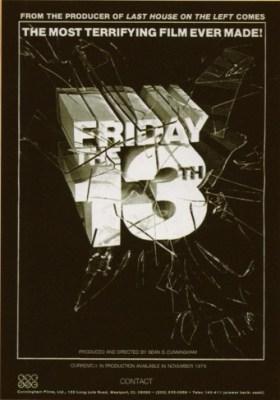
To be fair, some genres have always been first-weekend dependent
Here’s the thing that most people don’t realize: on average, studios do not actually make money from their combined theatrical releases in any given year. The studios split ticket sales 50/50 with the U.S. theaters, and take around 40% of the gross from foreign theaters, settling for as little as 25% in some markets, most specifically China. As a result, the average cost of luring a customer into a theater is often more than the studios get back from their share of the box office.
As of 2007, the last year that the studios shared this information with the MPAA, the studios spent an average of $36 million on print and advertising per film released in the United States but only got back $27 million from their share of ticket sales, keeping in mind that the $9 million gap between those two doesn’t even take into account how much the movie actually cost to make. Recently, The Hollywood Reporter revealed that advertising for mid-range films like The Fault in Our Stars or Tammy is now up to over $40 million, which in both cases is more than double what those films cost to make. That’s just in the U.S. and Canada. Worldwide, the average marketing costs for big budget tent-pole releases like Transformers: Age of Extinction and Guardians of the Galaxy is now up to $200 million, a 33% increase from the $150 million spent to promote the first Transformers in 2007. The risk is greater for a big budget release, but so is the reward, as the windfall from a truly profitable blockbuster helps cover the losses on smaller films or disappointing returns for similar blockbusters. The marketing costs are starting to push that profitability threshold even higher, though.
Given that environment, studios look to recoup their losses in later markets “on the theory that expending huge sums on its American opening will help the movie wrangle more advantageous play dates in foreign markets, sell more DVDs in video stores, and increase the licensing fees paid by pay-TV.” But even that is no longer as sure of a play due to declining DVD/Blu-Ray sales (albeit with surging digital sales) and online piracy preventing films from staggering out their foreign releases as much as they used to.

Even so, with all of the studios now subscribing to that theory and more prone to simply produce bigger movies the competition for that opening weekend is now more intense than ever, a partial cause behind the recent movement toward a more diversified release schedule where blockbusters aren’t limited to the summer but dropped in non-traditional months like March, April and October, e.g., Batman Vs. Superman is going to have no real competition in March 2016 as opposed to the jam-packed May-August section of that year.
How It’s Been Lately
Since this conversation was inspired by Guardians of the Galaxy, let’s just start in 2008 when the Marvel Cinematic Universe era of the film blockbuster began with the releases of Iron Man and The Incredible Hulk. With that as the starting point, how front-loaded have the summer’s big movies been as of late?
2008 –
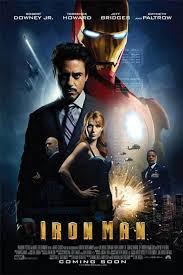
Iron Man kicked off the summer with a shocking $98 million opening weekend (like $111 million at current ticket prices), but it slid from pole position after just 2 weekends. It wasn’t until 2 months later than any other movie stuck at #1 in the box office top 10 for more than 1 week. That movie? The Dark Knight, which debuted with a record $158 million (like $179 million at current ticket prices) and ruled the top of the charts for 4 straight weeks, eventually beaten by Tropic Thunder, which itself stuck to #1 in the top 10 for 3 straight weeks.
- # of movies to repeat #1 = Three
- Longest Reign Atop the Chart = Four weeks (The Dark Knight)
- Biggest Opening Weekend = $158 million (The Dark Knight)
2009 –
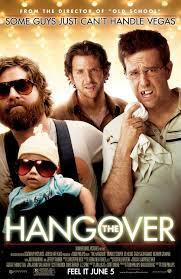
This was the summer of X-Men: Origins Wolverine, Star Trek, Harry Potter: The Half-Blood Prince, The Hangover, The Proposal, Transformers 2, District 9, and Inglorious Bastards. However, there wasn’t a repeat #1 until The Hangover surprised everyone with its big numbers in early June ($104 million after its first 10 days), and then Transformers 2 followed it by repeating at the end of June and beginning of July.
- # of movies to repeat #1 = Two
- Longest Reign Atop the Chart = Two weeks (Hangover, Transformers 2 tied)
- Biggest Opening Weekend = $108 million (Transformers 2)
2010 –
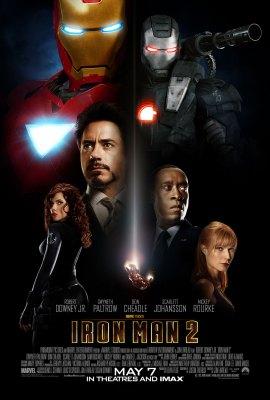
Iron Man 2 exploded out of the gate with $128 million (like $132 million at current ticket prices), but slid from the top of the chart in its third weekend, beginning a summer in which multiple films stuck to #1 for just 2 weeks (Toy Story 3, The Expendables) and a couple even ruled the charts for three weeks (Shrek Forever After & Inception).
- # of movies to repeat #1 = Five
- Longest Reign Atop the Chart = Three weeks (Shrek Forever After & Inception)
- Biggest Opening Weekend = $128 million (Iron Man 2)
2011 –
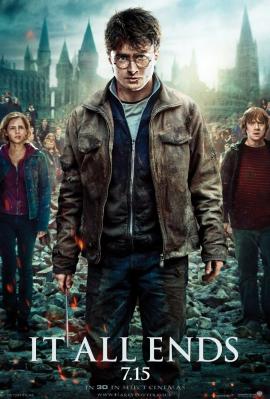
This was the summer of Thor, Pirates of the Caribbean 4, The Hangover 2, X-Men: First Class, Green Lantern, Cars 2, Transformers 3, Harry Potter & The Deathly Hallows Part 2, Captain America, Rise of the Planet of the Apes, and The Help. Even with all that competition, Thor, Transformers 3, Rise of the Planet of the Apes, and The Help each repeated at #1 for two straight weekends.
- # of movies to repeat #1 = Four
- Longest Reign Atop the Chart=Two weeks
- Biggest Opening Weekend = $169 million (Harry Potter & The Deathly Hallows Part 2)
2012 –
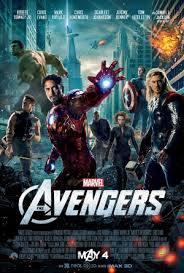
This was the summer of The Avengers and The Dark Knight Rises, with everything else kind of being an also-ran, including Battleship, Men in Black 3, Snow White & The Huntsman, Madagascar 3, Brave, Ted, The Amazing Spider-Man 1, The Bourne Legacy, and The Expendables 2. The Avengers set a record for biggest opening weekend (a record which still stands 2 years later), and reigned atop the chart for the first three weeks of May. The Dark Knight was no slouch either, opening with $160 million and reigning at #1 for the last two weeks of July and first week of August. The only other movies to repeat at #1 were Madagascar 3 in early June, and The Expendables 2 in late August.
- # of movies to repeat #1 = Four
- Longest Reign Atop the Chart = Three weeks
- Biggest Opening Weekend = $207 million (The Avengers)
2013 –
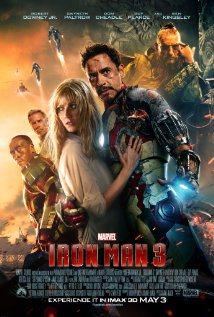
This was the summer of the bombs (White House Down, After Earth, The Lone Ranger, Turbo, and R.I.P.D.) , and with so much of the would-be competition failing to launch it resulted in five different films sticking to #1 for at least two weeks. Of course, the summer started off huge with Iron Man 3’s astounding $178 million debut, still the second biggest debut in box office history. After that, Star Trek Into Darkness, Fast & Furious 6, The Purge, Man of Steel, Monsters University, Despicable Me 2, The Conjuring, The Wolverine, Elysium, 2 Guns, and The Butler also debuted at #1, only Fast & Furious 6, Monsters University, Despicable Me 2, and The Butler managing to repeat. Despite all the bombs, this turned into the most lucrative summer in box office history.
- # of movies to repeat #1 = Five
- Longest Reign Atop the Chart = Two weeks
- Biggest Opening Weekend = $178 million (Iron Man 3)
2014 –

This summer’s box office is down 17% year-to-year, and will fail to produce a movie which grosses $300 million domestic for the first time since 2001. It has been a summer when Hollywood has had to ponder how disappointed it should be when something like The Amazing Spider-Man 2 and X-Men: Days of Future Past each cost $200+ million to make, $150-200 million to market, and only grossed a little over $700 million worldwide. It’s also a summer whose thunder was stolen earlier in the year, February’s The Lego Movie remaining the year’s biggest animated film ($257 million domestic) and April’s Captain America: The Winter Soldier the year’s biggest blockbuster ($259 million domestic). Moreover, it has been the year of big openings with short tails, with only Maleficent and Dawn of the Planet of the Apes posting truly impressive growth after their first 3 days. The first movie to repeat at #1 didn’t happen until late June (Transformers 2), and then Dawn of the Planet of the Apes repeated that feat in mid-July.
- # of movies to repeat #1 = Two
- Longest Reign Atop the Chart=Two weeks
- Biggest Opening Weekend = $100 million (Transformers: Age of Extinction)
Of course, it sounds more impressive to point back to E.T. and Back to the Future and marvel at how they each managed to top the box office top for at least 10 weeks when recent summers have been lucky to have a single movie last for longer than 3 tops atop the charts. But the box office totals we’re talking about are just so different, the older movies building their audiences gradually, current movies pulling in $100-200 million in a just 3 days. By comparison, even after you adjust for ticket price inflation Back to the Future/E.T. never made more than $35 million during one weekend; they just made that much per weekend for 10 straight weekends.
As Forbes‘ Scott Mendelson recently noted, “It’s bothersome how the current one-after-another nature of big-scale would-be tent-pole releases seems to negate the notion of a superior entry having better legs than a mediocre one.” One look at the current release schedule for the upcoming summers reveals that the eternal quest for the opening weekend is most definitely not going away, as fewer and fewer releases are being granted wide births.

